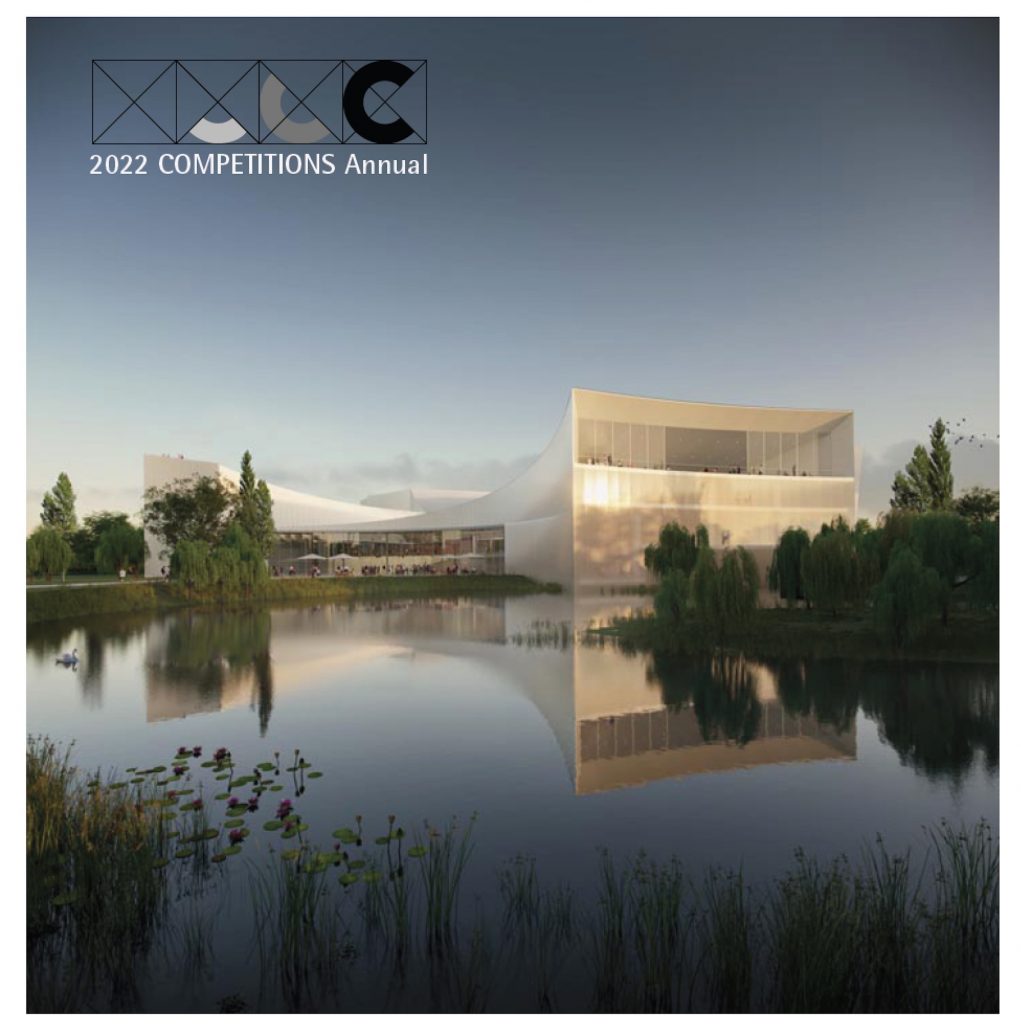NAMUR—JEAN-TALON WEST URBAN DESIGN COMPETITIONSponsor: The City of Montreal Location: Namur – Jean-Talon West sector in the Borough of Côte-des-Neiges – Notre-Dame-de-Grâce.
Type: Open, two-stage, Canada-wide ELIGIBILITY Any team may be accepted as a competitor that is made up of at least two principal designers. At least one principal designer per team must have a head office in Quebec at the time of entering.
Fee: None
Jury:
· Martin Brière, architect, Brière, Gilbert + associés (Montréal)
· Ken Greenberg, chair of the jury, architect and urban designer, Greenberg Consultants Inc. (Toronto)
· Daniel Lafond, Directeur de l’aménagement urbain et des services aux entreprises, Borough of Côte-des-Neiges—Notre-Dame-de-Grâce (Montréal)
· Gérald Lajeunesse, former Chief Landscape Architect, National Capital Commission (Ottawa)
· Brian Smith, employment consultant and supervisor of the Minorités visibles project, Carrefour jeunesse-emploi de Côte-des-Neiges (Montréal)
· Annie Tardivon, landscape architect DPLG, In Situ Paysagistes (Lyon, France)
· Geneviève Vachon, architect and full professor of urban design, École d’architecture de l’Université Laval (Québec)
PURPOSE OF THE COMPETITION The competition’s objective is to transform some of the area’s road corridors into quality public spaces for community use, give greater prominence to pedestrians, encourage everyone to make the new spaces their own, and make a positive contribution to the district’s new identity. The project is inspired by the principles of transit-oriented development (TOD) and aims to leverage the proximity of two métro stations, an advantageous geographical location within the city, as well as the excellent potential for densification in the area. The competition is aimed at eliciting and evaluating redevelopment and urban design concepts that satisfy or exceed the expectations of the borough with regard to the challenges posed by the project that is the subject of the competition. Subsequently it is aimed at mandating the laureate to draw up plans and specifications for the project to be completed.
The competition follows a hybrid formula, being both a “project competition” and an “ideas competition.” The “project” component covers the public areas determined by Paré and Buchan streets and part of Victoria Avenue, the design of redevelopment to be completed in this space, and the installation of 4 pedestrian crossings on Mountain Sights Avenue, normally leading to a project completion mandate. The “ideas” component will be used to propose development plans for the remaining private and public spaces in the sector.
REGISTRATION Registration in the competition is mandatory and free of charge. The registration form can be filled out online on the following site: www.letrianglemontreal.com.
To register, the completed registration form must be sent by e-mail, no later than 4 p.m. on May 27, 2011, to concours@letrianglemontreal.com. Caroline Dubuc
Bureau du design | Ville de Montréal
303, rue Notre-Dame Est, 6e étage, Montréal (Québec) H2Y 3Y8
514.872.1968 | cdubuc@ville.montreal.qc.ca
designmontreal.com | mtlunescodesign.com
facebook.com/designmontreal
twitter.com/designmontreal |
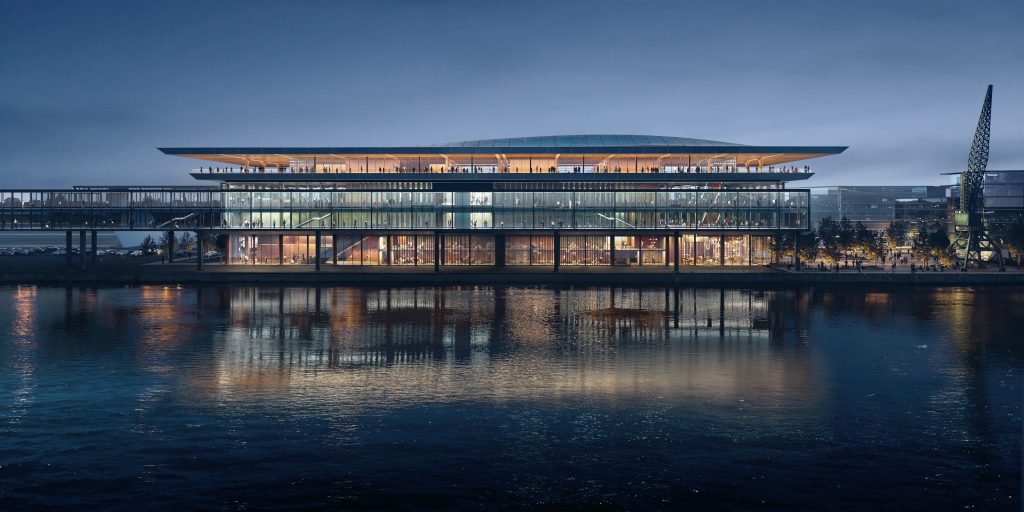
1st Place: Zaha Hadid Architects – night view from river – Render by Negativ
Arriving to board a ferry boat or cruise ship used to be a rather mundane experience. If you had luggage, you might be able to drop it off upon boarding, assuming that the boarding operation was sophisticated enough. In any case, the arrival experience was nothing to look forward to. I recall boarding the SS United States for a trip to Europe in the late 1950s. Arriving at the pier in New York, the only thought any traveler had was to board that ocean liner as soon as possible, find one’s cabin, and start exploring. If you were in New York City and arriving early, a nearby restaurant or cafe would be your best bet while passing time before boarding. Read more… Young Architects in Competitions When Competitions and a New Generation of Ideas Elevate Architectural Quality 
by Jean-Pierre Chupin and G. Stanley Collyer
published by Potential Architecture Books, Montreal, Canada 2020
271 illustrations in color and black & white
Available in PDF and eBook formats
ISBN 9781988962047
Wwhat do the Vietnam Memorial, the St. Louis Arch, and the Sydney Opera House have in common? These world renowned landmarks were all designed by architects under the age of 40, and in each case they were selected through open competitions. At their best, design competitions can provide a singular opportunity for young and unknown architects to make their mark on the built environment and launch productive, fruitful careers. But what happens when design competitions are engineered to favor the established and experienced practitioners from the very outset? This comprehensive new book written by Jean-Pierre Chupin (Canadian Competitions Catalogue) and Stanley Collyer (COMPETITIONS) highlights for the crucial role competitions have played in fostering the careers of young architects, and makes an argument against the trend of invited competitions and RFQs. The authors take an in-depth look at past competitions won by young architects and planners, and survey the state of competitions through the world on a region by region basis. The end result is a compelling argument for an inclusive approach to conducting international design competitions. Download Young Architects in Competitions for free at the following link: https://crc.umontreal.ca/en/publications-libre-acces/ 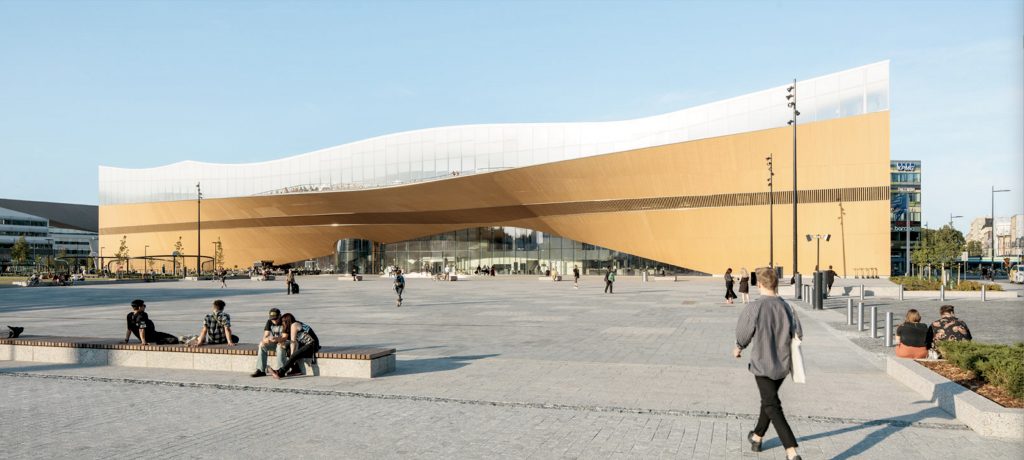
Helsinki Central Library, by ALA Architects (2012-2018)
The world has experienced a limited number of open competitions over the past three decades, but even with diminishing numbers, some stand out among projects in their categories that can’t be ignored for the high quality and degree of creativity they revealed. Included among those are several invited competitions that were extraordinary in their efforts to explore new avenues of institutional and museum design. Some might ask why the Vietnam Memorial is not mentioned here. Only included in our list are competitions that were covered by us, beginning in 1990 with COMPETITIONS magazine to the present day. As for what category a project under construction (Science Island), might belong to or fundraising still in progress (San Jose’s Urban Confluence or the Cold War Memorial competition, Wisconsin), we would classify the former as “built” and wait and see what happens with the latter—keeping our fingers crossed for a positive outcome. Read More… 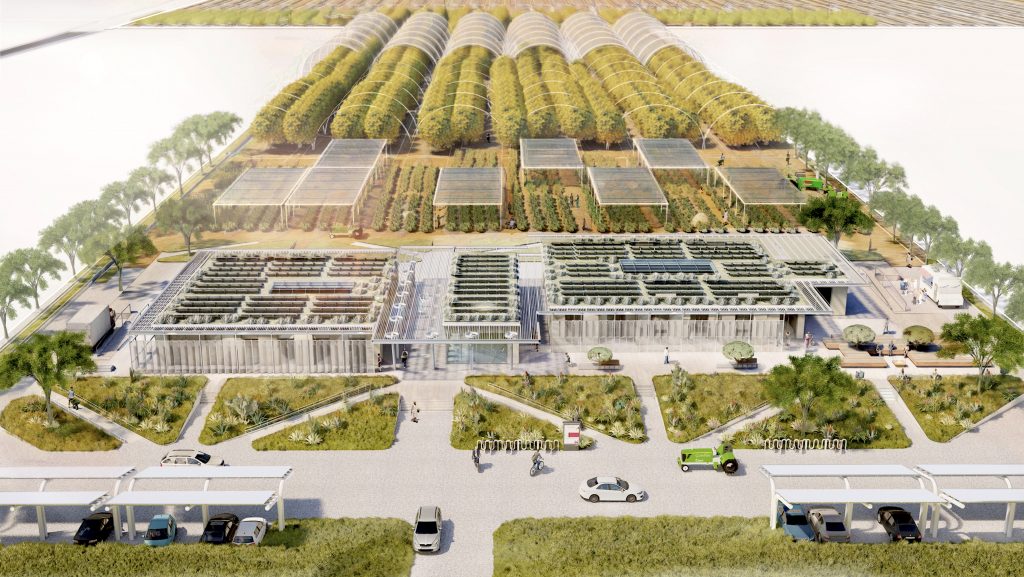
2023 Teaching and Innovation Farm Lab Graduate Student Honor Award by USC (aerial view)
Architecture at Zero competitions, which focus on the theme, Design Competition for Decarbonization, Equity and Resilience in California, have been supported by numerous California utilities such as Southern California Edison, PG&E, SoCAl Gas, etc., who have recognized the need for better climate solutions in that state as well as globally. Until recently, most of these competitions were based on an ideas only format, with few expectations that any of the winning designs would actually be realized. The anticipated realization of the 2022 and 2023 competitions suggests that some clients are taking these ideas seriously enough to go ahead with realization. Read more… 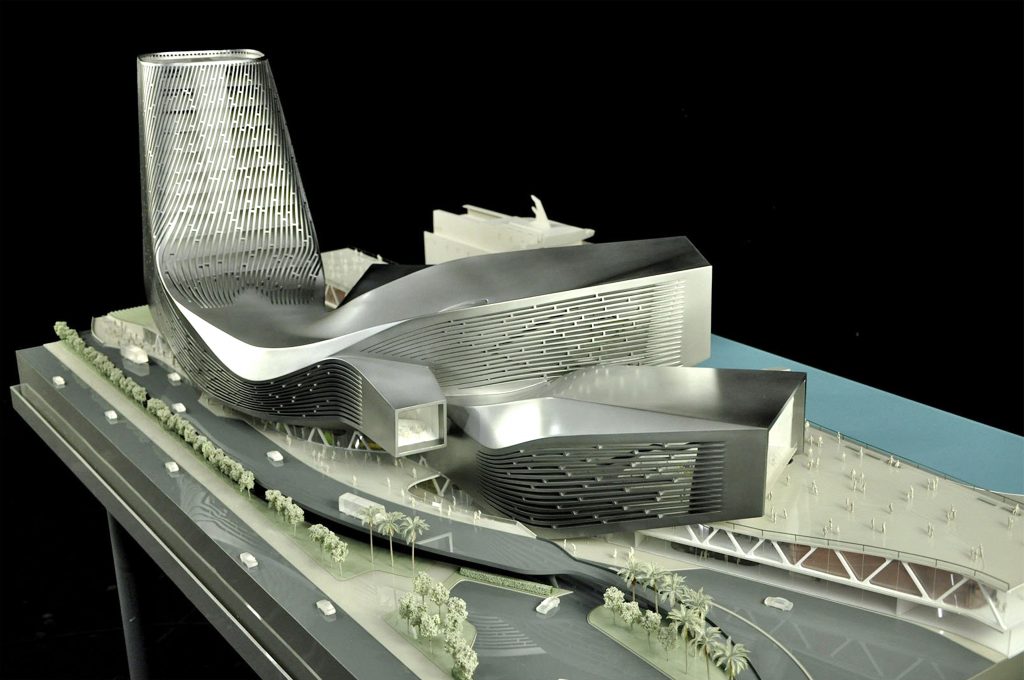
RUR model perspective – ©RUR
New Kaohsiung Port and Cruise Terminal, Taiwan (2011-2020)
Reiser+Umemoto RUR Architecture PC/ Jesse Reiser – U.S.A.
with
Fei & Cheng Associates/Philip T.C. Fei – R.O.C. (Tendener)
This was probably the last international open competition result that was built in Taiwan. A later competition for the Keelung Harbor Service Building Competition, won by Neil Denari of the U.S., the result of a shortlisting procedure, was not built. The fact that the project by RUR was eventually completed—the result of the RUR/Fei & Cheng’s winning entry there—certainly goes back to the collaborative role of those to firms in winning the 2008 Taipei Pop Music Center competition, a collaboration that should not be underestimated in setting the stage for this competition Read more… 
Winning entry ©Herzog de Meuron
In visiting any museum, one might wonder what important works of art are out of view in storage, possibly not considered high profile enough to see the light of day? In Korea, an answer to this question is in the making. It can come as no surprise that museums are running out of storage space. This is not just the case with long established “western” museums, but elsewhere throughout the world as well. In Seoul, South Korea, such an issue has been addressed by planning for a new kind of storage facility, the Seouipul Open Storage Museum. The new institution will house artworks and artifacts of three major museums in Seoul: the Seoul Museum of Modern Art, the Seoul Museum of History, and the Seoul Museum of Craft Art.
Read more… |



























